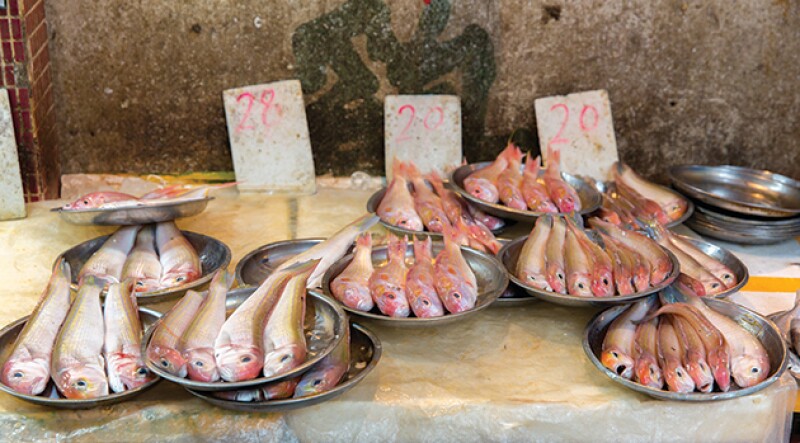
China provides multi-dimensional protection of IP rights. In addition to the two most commonly used ways – IP infringement litigation before a court and an administrative proceeding before a competent local authority – Customs protection can also be relied on to protect trade marks, copyright and patents. In recent years, Customs has been actively evolving to provide another battlefield for IP owners to fight against infringers. There are already advances and achievements that indicate a promising future for Customs protection of IP rights.
Rules and regulations
In 1995, the Rules of Customs IP Protection were issued. Since then, amendments were made twice respectively in 2003 and 2010 to adapt to the changing social situation. The current version of the Rules of Customs IP Protection organises the framework of how to enforce IP rights before Customs.
In 2009, Implementing Regulations of Customs IP Protection Rules came into effect to provide detailed measures on Customs IP protection practice. In 2012, Temporary Guidelines for Cooperation of General Administration of Customs with State Administration of Industry and Commerce to Improve Trade mark Right Enforcement were issued to establish communication and cooperative bridges between General Administration of Customs and State Administration of Industry and Commerce, bringing IP protection to a higher level. These have provided an efficient system to prevent infringing imports and exports.
Principles
Customs protection in China is by nature an administrative proceeding implemented by local Customs. Unlike judicial proceedings, approval of Customs protection will not be examined by courts and the focus of Customs protection is on responsiveness and executive ability. The main objective is to efficiently prevent IP-infringing products from coming into and leaving China.
The Customs IP Protection system covers trade marks, copyright and patents. This system operates based on both requests from IP owners and routine monitoring by Customs. There are generally two stages to the system: recordal of IP rights before Customs, and the detention and subsequent disposal of suspected infringing products by Customs. The whole picture of Customs IP protection can be understood from three perspectives: IP owners, consignee or consignor, and Customs.
Recordal of IP
The recordal procedure requires the attention of IP owners. IP owners, and only IP owners, have the right to record their IP before the General Administration of Customs. For domestic IP owners, the recordal of IP rights can be requested by themselves or domestic agents. For international IP owners, recordal needs to be requested by their branches inside China or domestic agents. A recordal is valid for ten years with payment and this period is extendable.
Detailed information should be provided during the recordal procedure including the IP owner's profile, information about IP rights and evidence about any known existing infringers. The official website of the General Administration of Customs is user-friendly and accessible for information uploading.
Supporting materials, such as documents, pictures or certificates should also be provided to Customs as evidence at the same time as information is uploaded. For international IP owners, evidence in foreign languages should be translated into Chinese. However, notarisation and legalisation of this evidence is not necessarily a must but is at the discretion of the General Administration of Customs.
Special requirements are in place for patent rights. For example, if the recordal date is not within one year after the grant date of the patent, a patent register copy should be provided that is made within six months of the recordal date. For recordal of utility model and design patents, a patent evaluation report made by SIPO should be provided. In the event that an infringing lawsuit has been established before a Chinese court or an infringing dispute is being handled by a local IP authority, related legal or administrative documents should also be provided.
IP owners should guarantee the authentication of the recordal information and evidence, otherwise Customs will not approve recordal requests or will withdraw the recorded IP rights. IP owners also have an obligation to update status changes for their IP, such as the cancellation of a trade mark or the invalidation of patent.
Detention procedures
IP owners
IP owners are entitled to ask the local Customs authority to detain possible infringing products. IP owners need to provide detailed information and evidence to prove that there will be obvious infringement. They need to prove that: the products concerned are being imported or exported imminently; and the products use unauthorised trade marks or infringe patents. In addition, IP owners should provide information about port, time and transportation for imports and exports.
IP owners should post a bond for this kind of detention request, which is no more than the value of the products with a cap of Rmb100,000 (US$15,300). For trade mark owners which have recorded their rights with Customs, a general bond is allowed with the cap of Rmb200,000 (US$30,500). The bond can be used to compensate for possible loss to the consignee or consignor and fees for storage, maintenance and disposal. The part of the bond which is used to cover fees for storage, maintenance and disposal can be claimed as reasonable costs in future IP infringement lawsuits.
With the suspected infringing products successfully detained by Customs, IP owners have the right to check detained products upon request. IP owners are also entitled to request courts to grant a preliminary injunction or evidence preservation orders based on detained products. Customs will cooperate with legal orders from courts.
Although IP owners have the power to ask for detention, this power is balanced by the responsibility to compensate if Customs does not determine IP infringement or the court does not decide in favour of the IP owners.
Consignee or consignor
The consignee or consignor has the right to defend themselves against attacks from IP owners. If the consignee or consignor argues that their goods are not infringing any IP rights, they have the opportunity to explain this to Customs in written form with related evidence. If the imported or exported products are determined to be infringing IP rights with seriously adverse circumstances, it is likely that the consignee or consignor is liable for criminal sanctions.
When there are accusations of patent infringement, it is also possible for the consignee or consignor to post a bond with a value equivalent to the goods for clearance. The bond shall be refunded if the IP owners do not launch a patent infringement lawsuit before the court within a reasonable period.
For suspected infringing products that have been detained, the consignee or consignor may ask to check the goods onsite and is also obliged to be cooperative by, for example, answering questions, making statements or providing evidence.
Customs
Customs have the power to determine whether to detain products that are suspected of being infringing. Generally, Customs will not automatically make a decision to detain, and whether to launch an action is at the request of IP owners.
If IP owners provide enough information and evidence to prove obvious IP infringement and post the bond, Customs should detain the infringing products and notify the IP owners and consignee or consignor in written form, otherwise Customs should reject the detention requests, clear goods from the Customs and notify only the IP owners.
However, for IP rights that have been recorded, it is likely that Customs would automatically search out the infringing goods as part of routine checks and monitoring of imported and exported goods. This is advantageous for IP owners who have recorded IP rights before Customs. If Customs automatically finds infringing goods, they will notify owners in written form to ascertain what they want. If IP owners ask for detention, Customs should investigate the products within thirty business days starting from the detention date. The Customs investigation may ask for advice from the local IP authority to determine whether there is IP infringement.
A Customs investigation will bring one of two results. The first is a determination of IP infringement, in which case Customs will confiscate the infringing products, and the other is an inability to determine IP infringement, in which case Customs should notify IP owners in written form within thirty business days starting from the detention date. Further, Customs should clear the goods unless it has received an order from the courts to seize the infringing products within fifty business days starting from the detention date.
Customs should release the products suspected of infringement in any of the following situations:
In cases where the IP owners have asked for detention, if Customs do not receive any orders from the courts within twenty business days starting from the detention date;
With infringing products that were automatically found by Customs based on recorded IP rights and then detained at the request of the IP owner, if Customs do not receive any orders from the courts within fifty business days starting from detention date and IP infringement is not determined from an investigation by Customs;
A bond equivalent to the value of the goods is posted by the consignee or consignor;
Evidence provided by the consignee or consignor is believed to be sufficient to prove non-infringement;
The IP owners withdraw the detention request.
Customs has the power to dispose of infringing products in a number of ways. The priority method of disposal is to use the infringing products for public welfare or sell the infringing products to IP owners. A second option is to sell the goods at auction after the infringing elements have been removed. The last option is to destroy infringing products with appropriate assistance from the IP owners.
Practice of Customs IP Protection
Customs in China provide effective protection of IP rights. They are playing an increasingly important role in actively detaining products suspected of infringement. In 2014, the number of automatic searches by Customs was far larger than that the number of requests by IP owners.
Trade marks are the most frequently used IP rights at Customs. This is because it is rather easy to recognise trade marks by just watching those trade mark created by pictures, forms or texts. Customs detention is mainly achieved during the exporting process because of the focus of local Customs on monitoring infringement of goods for export.
The main products that are detained are consumer products, such as cigarettes, light industry products, cosmetics and day care products, clothes and shoes. Customs are also working harder on monitoring fake medicine, food and motorcycle parts to reduce risk to human health and safety.
|
|
"Customs has the power to dispose of infringing products in a number of ways" |
|
|
The main channels for detaining infringing products include postal delivery and shipping. Local Customs are paying special attention to monitoring shipping to Africa, US and Europe, which are believed to be the main sources of IP infringement. Faced with the boom in e-commerce, Customs are also strictly monitoring postal delivery.
Information disclosure about IP infringement cases and the transparency of law enforcement are improving with portal websites of Customs for case information. The Customs IP Recordal Online System has been put in use since 2014 to facilitate IP owners going through the whole recordal procedure using an online service.
Customs are much more active in cooperating with IP owners to get more information about infringements. IP owners are encouraged to collect and provide details about infringing products to Customs. IP owners are invited to communicate with and train Customs officers about how to identify infringing products.
Finally, Customs are active at integrating case information, infringing products details, IP owner reports, other Chinese law enforcement authority and feedback from overseas Customs to establish infringing risks analysis and management systems, improving the effectiveness and accuracy of Customs law enforcement actions.
Statistics about law enforcement by some local Customs in 2015 have been disclosed to the public to show the strength of Customs IP protection. Here are some key figures:
In the first half of 2015, Beijing Customs detained 7,000 products, covering industrial bearings, clothes, flash drives, and glasses;
In 2015, Tianjin Customs detained 388,000 products with a value of Rmb711 million (US$109 million);
In December 2015, Dalian Customs destroyed 1,030,000 infringing products, covering DVDs, clothes and shoes, boxes and bags, medicine and electronic devices;
In 2015, Guangdong Customs detained 1,070,000 infringing products, covering communication devices, clothes and shoes and boxes and bags, medicine, vehicle and motorcycle assembly.
In 2015, Hangzhou Customs detained 570,000 infringing products.
In August 2015, Ningbo Customs destroyed 962,000 infringing products, covering clothes, toys, electronic devices, vehicle assemblies and cosmetics.
Customs IP protection measures are also effective tools to collect evidence that can be used in IP infringement lawsuits. In some cases, IP owners successfully take advantage of Customs IP protection measures to obtain useful evidence to prove infringement and help calculate damages.
For example, an invention patent infringement case ((2013) Guangdong High Court Second Instance no 719) related to a fried cooking pot. Patentee SEB company successfully convinced Shenzhen Customs to detain 870 infringing fried cooking pots. Zhongshan Intermediate Court approved the evidence preservation request of the Patentee SEB over the detained infringing fried cooking pot. Then the preserved infringing fried cooking pot was qualified as evidence to prove patent infringement.
In a utility model patent infringement case ((2013) Shanghai First Intermediate Court First Instance no 136) that was related to a fan assembly, patent owner Dyson Technology successfully convinced Shanghai Customs to detain 1,300 infringing fans. In the meantime, Dyson also obtained information about sales amounting to US$42,405 of those infringing fans, which would otherwise have been difficult to obtain.
A trade mark infringement case ((2014) Beijing Chaoyang District Court First Instance no 20737) related to the registered trade mark Peak. Trade mark owner Peak recorded its trade mark before Tianjin Customs. Tianjin Customs automatically searched out 400 bags carrying the similar brand Peak50+5 manufactured by Kanger Company. Based on this evidence, the trade mark owner Peak launched a trade mark right infringement lawsuit against the infringer Kanger Company and obtained injunctive and monetary relief.
Recommendations
Practical and useful tips are listed below that should help IP owners to get maximum use out of the Customs IP protection system in China.
A trade mark right is the most useful right in the Customs IP protection system. This is because a trade mark can easily be identified and infringement is easier to determine. This is also true for design patents, which are also formed by pictures or drawings can be easily identified.
Invention patents and utility model patents are difficult to use in Customs IP protection systems because these types of patents require more of a scientific background to determine infringement. The protection scope of invention patent and utility model patents is defined by literal texts, therefore, long-term training of technical feature comparison techniques and related technical knowledge is needed for Customs officers to determine infringement.
IP recordal is very important for Customs IP protection. Although Customs detention can be requested without IP recordal as a prerequisite, approval of detention of infringing goods will be expedited based on recorded IP rights. Good communication with local Customs is also very helpful for successful detention.
Customs IP protection should be used in combination with judicial procedures (court litigation) as an effective strategy to fight against infringers. Without orders from courts to seize suspect goods, those products would possibly be released at the end of the detention period, which is at most fifty business days. Generally, Customs detention can be understood as a temporary tool to keep suspect products authoritatively, and seizure and injunction done by the courts should be the ultimate solution to IP infringement.
Customs IP protection measures have the advantageous function of collecting evidence proving infringement and damages, which are to some degree difficult to obtain due to the lack of an evidence discovery system in China. Moreover, evidence provided through Customs is considered to be strong because such evidence is from an authoritative source.
Yao Guanyang |
||

|
|
Yao Guanyang joined Liu, Shen & Associates in 2005, specialising in patent services including prosecution, reexamination, invalidation, infringement and administrative litigation, and client counselling with a focus on mechanical engineering, vehicle engineering and medical devices. Yao obtained his bachelor degree in jet propulsion and master’s degree in information systems from Beijing Aeronautics and Astronautics University (BUAA) in 2002 and 2005. He obtained a master of law degree (LLM) with Honour from The John Marshall Law School in the US in 2015. He qualified as a patent attorney in 2006 and an attorney at law in 2008. Yao is experienced in representing international companies to handle patent disputes including infringement cases, invalidation cases, Customs IP protection cases and IP protection at trade fairs. He is specialised in patent searching and evidence preservation, which are the ultimate basis for patent disputes. He also has expertise in providing reports that analyse patent infringement and patent invalidation to international companies. |










